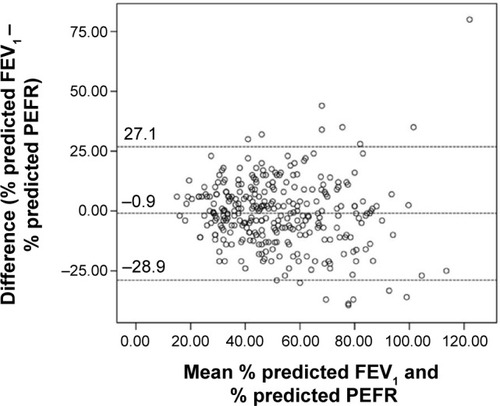Figures & data
Table 1 Baseline characteristics of all COPD patients
Figure 1 Correlation between FEV1 and PEFR in patients with COPD.
Abbreviations: FEV1, forced expiratory volume in 1 second; PEFR, peak expiratory flow rate.

Table 2 Comparison between % predicted FEV1 and % predicted PEFR in each category of airflow limitation
Figure 2 Histogram showing the near-normal distribution of differences between % predicted FEV1 and PEFR in COPD patients.
Abbreviations: FEV1, forced expiratory volume in 1 second; PEFR, peak expiratory flow rate.

Figure 3 Bland–Altman plot highlighting magnitude of difference between % predicted FEV1 and PEFR.

Table 3 Concordance between categorization of severity of airflow limitation based on % predicted FEV1 and % predicted PEFR in COPD patients
